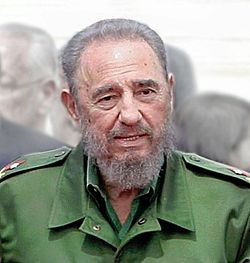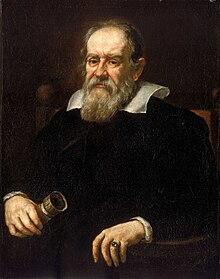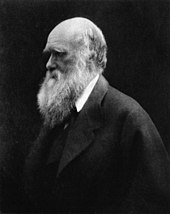Wednesday 29 February 2012
February 29: "Gone with the Wind" won 10 Oscars (1940)
The 1939 movie Gone with the Wind received 10 Academy Awards (8 competitive, 1 honorary and 1 technical) in the 12th Academy Awards on February 29, 1940. Of the 17 competitive awards, the movie had 13 nominations. This was the first movie that won more than five Academy Awards. The movie was one of the earliest major movie shot in colour and won the first Academy Award for Best Cinematography. The movie was directed by Victor Fleming and from a screenplay by Sidney Howard based on the Pulitzer-award winning novel of the same name by Margaret Mitchell. Among others, Clark Gable, Vivien Leigh, Leslie Howard, Olivia de Havilland and Hattie McDaniel were the main characters. It was the longest American sound movie with 3 hours and 44 minutes. It is the highest-grossing movie after inflation adjustment.
Tuesday 28 February 2012
February 28: DNA structure was discovered (1953)
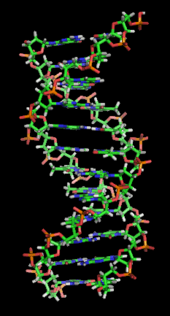 |
| DNA structure |
Monday 27 February 2012
February 27: The British Labour Party is founded (1900)
The Labour Party was founded from the Trade Union Congress, which was well attended by various working-class and left-wing organizations, in 1900. The party is a centre-left social democratic and democratic socialist political party in the UK. Labour formed its first government in 1924 under the leadership of Ramsey MacDonald - the first Labour prime minister. The latest Labour government was led by Tony Blair and Gordon Brown between 1997 and 2010, which is known as the "New Labour" period. Blair is the longest serving Labour prime minister (for 10 years) and the only person to have led three consecutive victories in the general election. The party is a member of the Socialist International. Labour is current official opposition under the leadership of Ed Miliband.
Sunday 26 February 2012
February 26: Barings Bank collapsed (1995)
Barings Bank was the oldest merchant bank in London until its collapse in 1995 due to a series of speculative investment involving futures contracts, managed by Nick Leeson of its Singapore office, which resulted in a loss of £827 million ($1.3 billion). Barings Bank was founded in 1762 and had survived financial crises such as the Great Depression and World Wars. The bank had been playing an important role in the British financial market until the collapse. The corruption and greed were one of the main causes of the failure. The bank was acquired by ING Group of the Netherlands.
Saturday 25 February 2012
February 25: JP Morgan incorporated US Steel (1901)
JP Morgan and the attorney Elbert Gary founded United States Steel Corporation (US Steel) in 1901 and incorporated on February 25, 1901 by combining Andrew Carnegie's Carnegie Steel Company with Gary's Federal Steel Company and William Henry Moore's National Steel Company. The company became the first billion dollar company in the world. US Steel was the largest steel producer and largest corporation in the world at one time. It acquired oil companies during 1980s and now a majority portion of the company's revenue and profits are from its energy subsidiaries. US Steel and the energy companies are now under the holding company USX Corporation.
Friday 24 February 2012
February 24: Fidel Castro retired from the public positions (2008)
In 2008, Fidel Alejandro Castro Ruz, former head of Cuba, retired from the leadership positions of Cuba. He stepped down from all leadership positions including the President, the Secretary-General of the Non-Aligned Movement and the first Secretary of the Communist Party of Cuba. Castro had been in the leadership positions of Cuba for 55 years. He is a Marxist-Leninist and converted Cuba into a one-party socialist state.
Thursday 23 February 2012
February 23: ISO was founded (1947)
The International Organization for Standardization (ISO), an international standard-setting body composed of representatives of national standardization bodies, was founded on February 23, 1947. The ISO is headquartered in Geneva, Switzerland and has 162 member nations. The official languages of the ISO include English, French and Russian. Standards of the ISO are the most widely adopted in the world.
Wednesday 22 February 2012
February 22: The first cloned mammal Dolly was anounced (1997)
 |
| Remains of Dolly |
Tuesday 21 February 2012
February 21: The Peace Symbol was designed (1958)
Monday 20 February 2012
February 20: The Met was opened (1872)
The Metropolitan Museum of Art (the Met) was opened at 681 Fifth Avenue in Manhattan, New York, on February 20, 1872. The museum was founded in 1870 by a group of American citizens including financiers, businessmen and artists. Over time, the museum bought and accommodated a significant amount of valuable art works and it has grown significantly. As of 2010, the Met's facade measures almost a quarter mile and its area covers over two million square feet. Currently it houses over 2 million works.
Sunday 19 February 2012
February 19: Alan Turing's paper on stored-program comuter (1946)
Alan Mathison Turing, the father of computer science, presented a paper describing detailed design of a stored-program computer on February 19, 1946. Turing had worked on the design of the Automatic Computing Engine (ACE) at the National Physical Laboratory of the UK between 1945 and 1947. This paper is based on the work of ACE and the computing machines used at the Bletchley Park. In February 1947, Turing wrote a report 'Intelligent Machinery', which introduced the question of whether or not it is possible for machinery to show intelligent behaviour - this is later named "Turing test".
Saturday 18 February 2012
February 18: Statue of Liberty patented (1897)
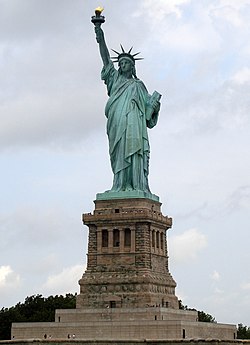 |
| Statue of Liberty |
Friday 17 February 2012
February 17: Newsweek was launched (1933)
 |
| The first issue of Newsweek |
Thursday 16 February 2012
February 16: First bulletin board went online (1978)
 |
| Ward Christensen and the CBBS server |
Wednesday 15 February 2012
February 15: Galileo Galilei was born (1564)
Galileo Galilei, an Italian inventor, physicist, mathematician, astronomer and philosopher, was born on February 15, 1564. He improved the telescope and discovered the four largest satellites of Jupiter. His support for the heliocentrism, which was introduced by Copernicus, caused great discomfort to the church and he ended up denying his scientific belief in an investigation by the Roman Inquisition. Galilei also improved scientific devices like compass, thermometer and microscope. He passed away on January 8, 1642.
Tuesday 14 February 2012
February 14: ENIAC was released to the public (1946)
 |
| ENIAC |
Monday 13 February 2012
February 13: Apollo Computer was incorporated (1980)
 |
| Apollo DN330 workstation |
Sunday 12 February 2012
February 12: Charles Darwin was born (1809)
Charles Robert Darwin, an English naturalist, was born on February 12, 1809. He published his seminal book "On the origin of species" in 1859, after his voyages on HMS Beagle. He developed a theory of evolution, later called Darwinism, and provided its evidence. The theory of natural selection nailed his idea. His theory has been widely adopted, however, the controversy around Darwinism also never stops. He died on April 19, 1882 at age 73 and was honoured by ceremonial funeral at Westminster Abbey, where he was buried near Isaac Newton. Darwin has been regarded as the one of the most influential people in human history. His influence is not limited to the area of natural science but to social science, philosophy, art, ... everywhere.
Saturday 11 February 2012
February 11: University College London was founded (1826)
University College London (UCL) was founded on February 11, 1826 as the first university established in London. It is the first university in England to admit students regardless of the religion or gender. UCL became one of the two founding colleges of the University of London, founded in 1836, along with King's College London. The University of London is a federal university made up of 19 separate colleges and 12 research institutes and it is the largest university in the UK by the number of full-time students, with over 135,000 students and 50,000 in the international programs. UCL is the oldest and largest constituent college in the University of London. Notable alumni of the UCL include Mahatma Gandhi, John Graham Bell, Rabindranath Tagore, to name a few.
Friday 10 February 2012
February 10: Deep Blue defeated Kasparov (1996)
 |
| IBM Deep Blue |
Thursday 9 February 2012
February 9: David Wheeler (1927) and Roger Needham (1935) were born
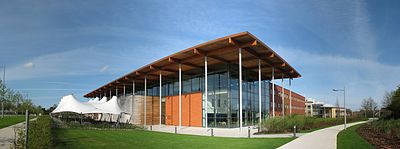 |
| Computer Laboratory, University of Cambridge |
Wednesday 8 February 2012
February 8: Standard Time proposed (1879)
 |
| Fleming memorial plaque: Inventor of Standard Time |
Tuesday 7 February 2012
February 7: The Maastricht Treaty signed (1992)
 |
| European Union |
Monday 6 February 2012
February 6: Jack Kilby filed the first patent for the integrated circuit (1959)
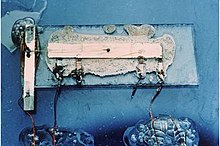 |
| Jack Kilby's original integrated circuit |
Sunday 5 February 2012
February 5: BBC pips began broadcasting (1924)
 |
| The pips in time interval |
Saturday 4 February 2012
February 4: Facebook was launched (2004)
Facebook, the most used social network service globally, was launched on February 4, 2004. Facebook was founded by Mark Zuckerberg, a Harvard dropout, with his college roommates and fellow students. The story around the foundation of the company and conflicts among the founders inspired the movie The Social Network. As of December 31, 2011, the service has 845 million active users and it is the second most accessed web site in the US according to the Nielsen Media Research study. Facebook filed for a $5 billion initial public offering on February 1, 2012. The IPO would value the company between $75 billion and $100 billion, which would be the largest Internet IPO in the world.
Friday 3 February 2012
February 3: Tulip mania collapsed (1637)
 |
| Tulip price index during tulip mania |
Thursday 2 February 2012
February 2: First Groundhog Day recorded (1841)
In Berks County, Pennsylvania, the first Groundhog Day was recorded in 1841. The story behind the day is, if it is cloudy when a groundhog peeps out of its burrow, spring will come early. If it is sunny that day, the winter will stay for another six weeks. This story has a German origin. Groundhog Day is celebrated in the US and Canada. The largest Groundhog Day is held in Punxsutawney, Pennsylvania, partially because of the 1993 movie Groundhog Day, which was set in the town.
Wednesday 1 February 2012
February 1: The Black Maria was built (1893)
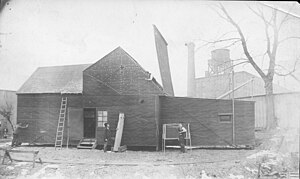 |
| The Black Maria |
Subscribe to:
Posts (Atom)



